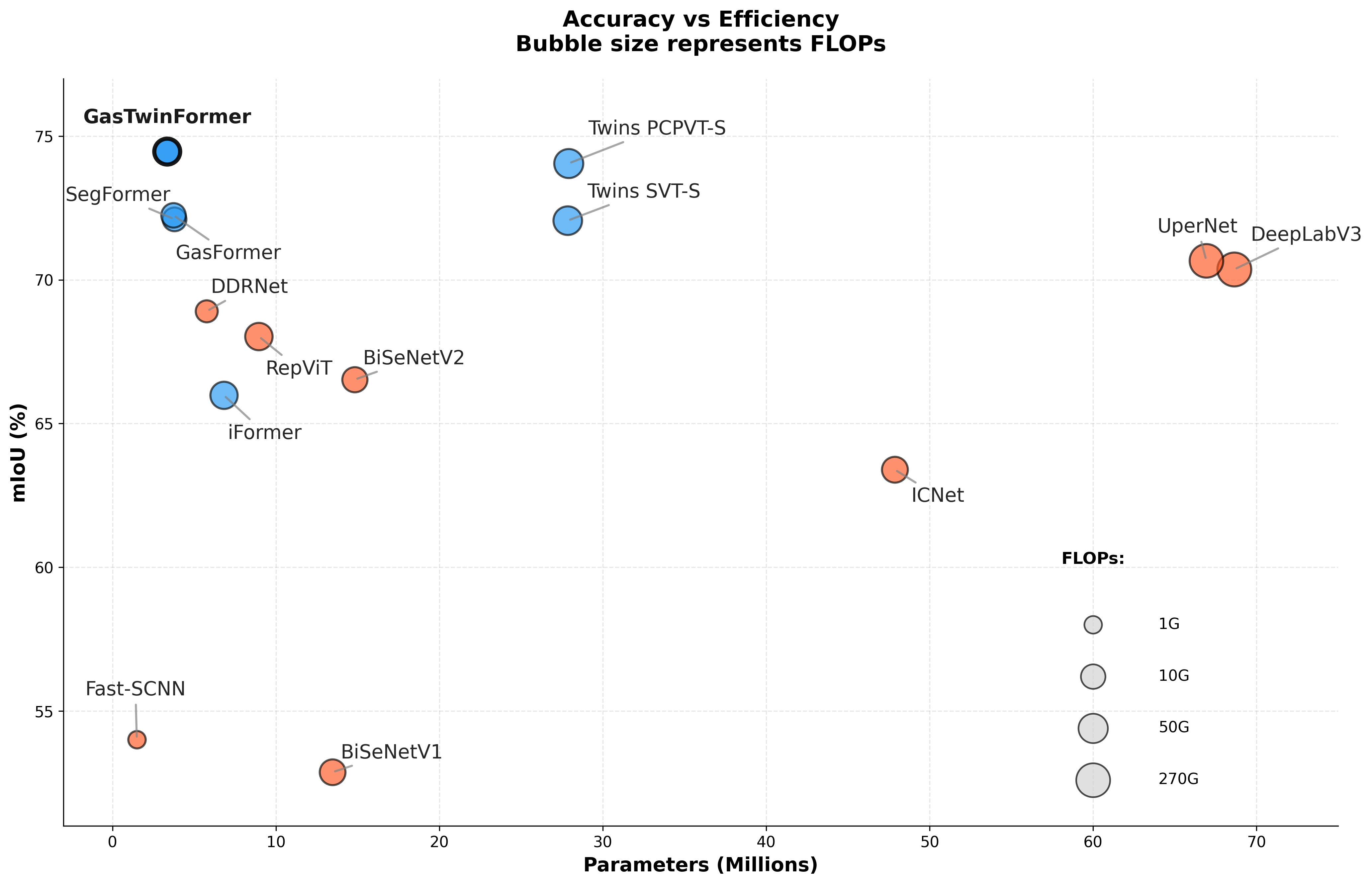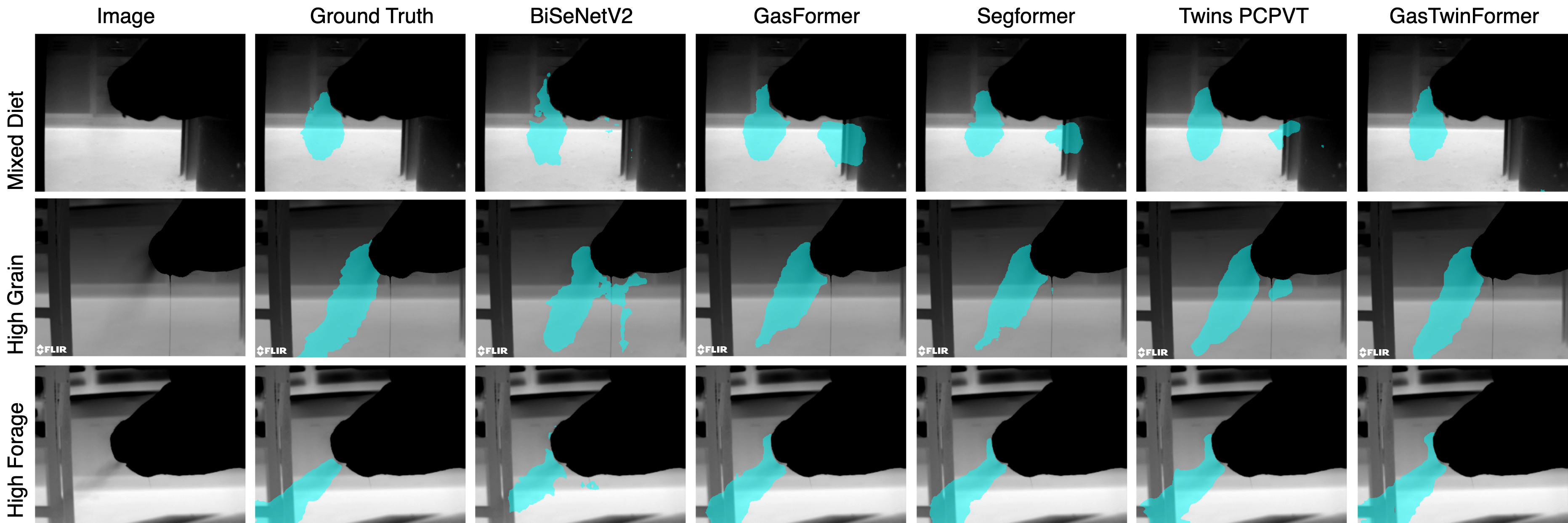- Mix Twin Encoder: Alternates spatially-reduced global attention with locally-grouped self-attention to balance global context and local detail.
- LR-ASPP Decoder: Lightweight multi-scale aggregation using encoder features (F1+F2+F3) for precise plume boundaries at real-time speed.
- Multi-task Head: Joint methane segmentation and dietary classification in one network.
- Optimized Design: Best attention pattern EL-EL-EL-EL, LSA window 5×5, Gaussian Plume loss for segmentation.
Architecture
GasTwinFormer Architecture: Mix Twin Encoder alternates between Efficient Multi-head Attention (EMA) blocks with spatially-reduced global attention and Locally-grouped Self-Attention (LSA) blocks. Features from F1, F2, and F3 are aggregated by the LR-ASPP decoder for methane segmentation, while F4 feeds the dietary classification head.

